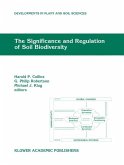Chemical cues are used to communicate, but can also be exploited in espionage or eavesdropping. To understand the ecology of chemical signalling in communities one needs to carry out manipulative experiments. Such experiments have been done throughout the last century. However, in recent years the degree of precision with which such experiments can be done has grown tremendously as a result of rapidly increasing knowledge at the molecular-genetic level. This opens exciting new avenues to chemical ecologists. The connection of molecular genetics to community ecology and ecosystem ecology provides novel tools to take up old questions that were often hard to answer. This book provides an overview of chemical ecology related to different ecosystems and an outlook at novel directions that can be taken in chemical ecology through a molecular-ecological or eco-genomic approach. The book addresses above- and belowground terrestrial systems as well as aquatic systems, and the organisms involved are micro- and macro-organisms, such as plants, arthropods and mammals. The scientific approach presented in this book is characteristic of modern biological research.








